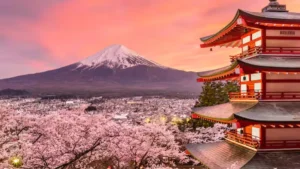Some rulers in history are remembered not just for their conquests but for their efforts to promote peace, welfare, and harmony among their people. They stand out as leaders who cared deeply about the well-being of their subjects and the spread of important values, leaving a lasting mark on society and culture. In this article, we will know about the person who is known as the “Second Ashoka” in this article.
Second Ashoka
Kanishka I, the famous ruler of the Kushan dynasty, is often called the “Second Ashoka.” This is because, like Emperor Ashoka, he greatly supported the growth of Buddhism. Kanishka encouraged Buddhist teachings and helped them spread beyond India, especially along the Silk Road to Central Asia and China. His strong support led to the rise of Mahayana Buddhism, making him one of Buddhism’s greatest patrons.
Early Life and Genealogy
Kanishka descended from the lineage of Kujula Kadphises, the founder of the Kushan empire. His genealogy, detailed in the Rabatak inscription, lists Kujula Kadphises as his great-grandfather, Vima Taktu as his grandfather and Vima Kadphises as his father. Scholars believe Kanishka was of Yuezhi ethnicity, with Tocharian as his probable native language.
Empire and Administration
Under Kanishka’s reign, the Kushan Empire was vast, covering regions from southern Uzbekistan to northern India, including Kashmir. He established Purusapura as his main capital to remain close to Kashmir, a region he favored for its cultural and religious significance. His administration marked a linguistics shift when he replaced Greek with Bactrian as the official language.
Patronage of Buddhism
Kanishka’s reign is particularly notable for his support of Buddhism, despite not converting to the faith. He facilitated the spread of Mahayana Buddhism along the Silk Road, promoting cultural and religious exchanges between India and Central Asia. His contributions included the construction of stupas and monasteries, such as the grand stupa at Peshawar.
Coins and Religious Syncretism
Kanishka’s coins reflect his empire’s cultural diversity, depicting Indian, Greek, Iranian and Sumero-Elamite deities. Early coins bore Greek legends and deities like Helios and Selene, while later coins featured Bactrian inscriptions and Iranian and Indic divinities, such as Buddha, Shiva and Mithra. These coins symbolize the religious syncretism of his time.
Conquests and Conflicts
Kanishka expanded his empire through military campaigns, reportedly reaching Pataliputra and Sri Champa in India. His Central Asian conquests, evidenced by coin finds and Chinese chronicles, extended Kushan influence into the Tarim Basin. He possibly repelled invasions by the Parthian Empire and engaged in conflicts with Chinese forces near Khotan.
Legacy of Kanishka I, Second Ashoka
Kanishka’s reign left an enduring legacy in the fields of art, religion, and trade. The Mathura and Gandhara art styles flourished under his patronage, blending Indian and Hellenistic influences. His efforts to propagate Buddhism significantly impacted its development and transmission to East Asia, cementing his place as a pivotal figure in history.



 Which Country is Known as the Land of Ch...
Which Country is Known as the Land of Ch...
 Which Bird is known as the King of Birds...
Which Bird is known as the King of Birds...
 Which City of Austria is Known as the Ci...
Which City of Austria is Known as the Ci...







